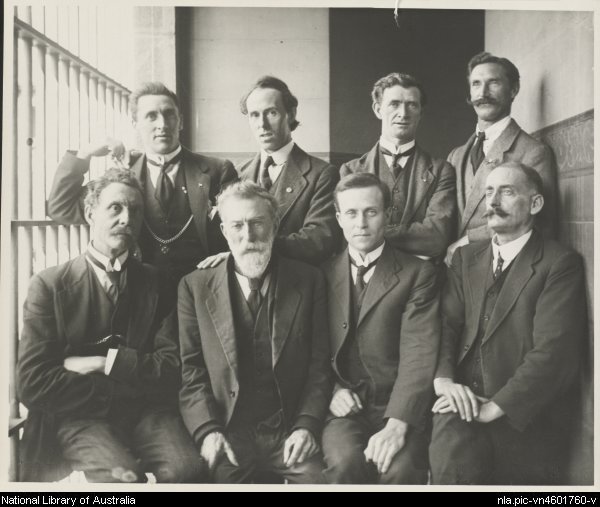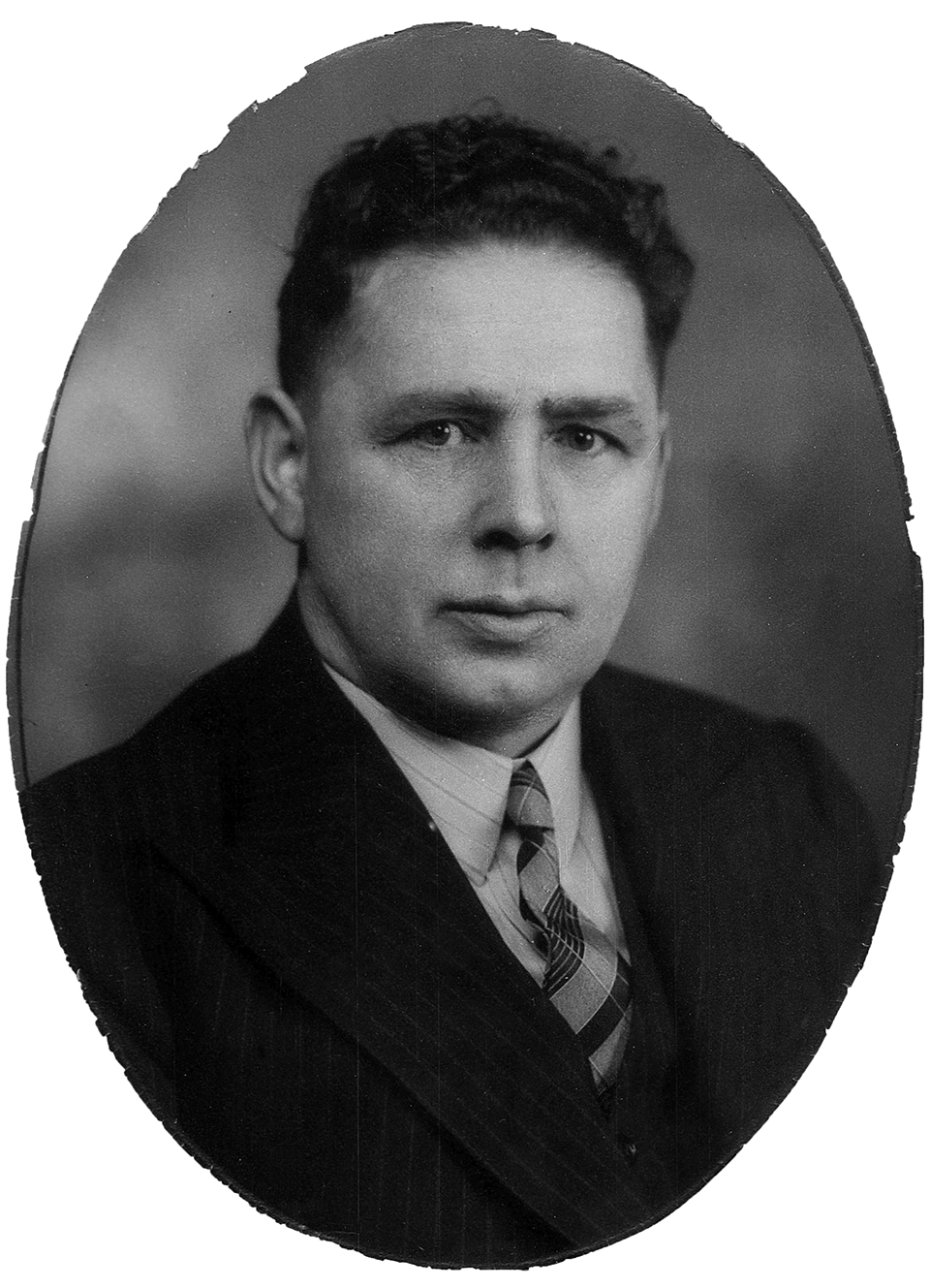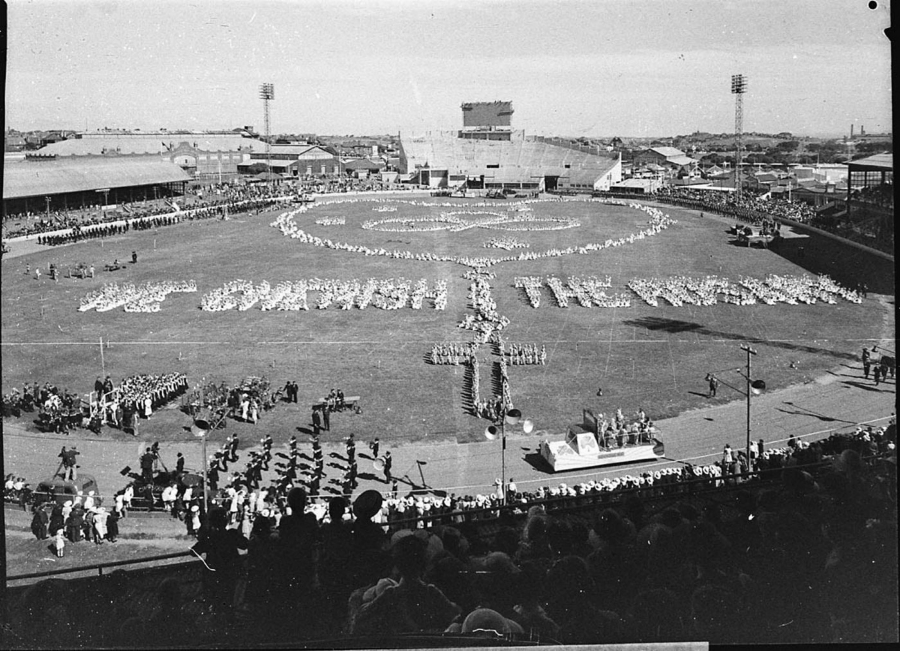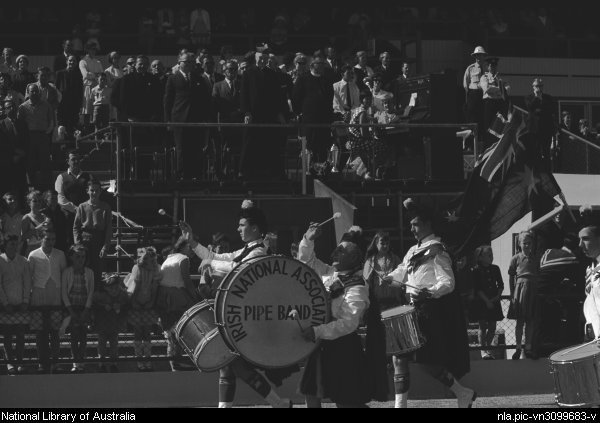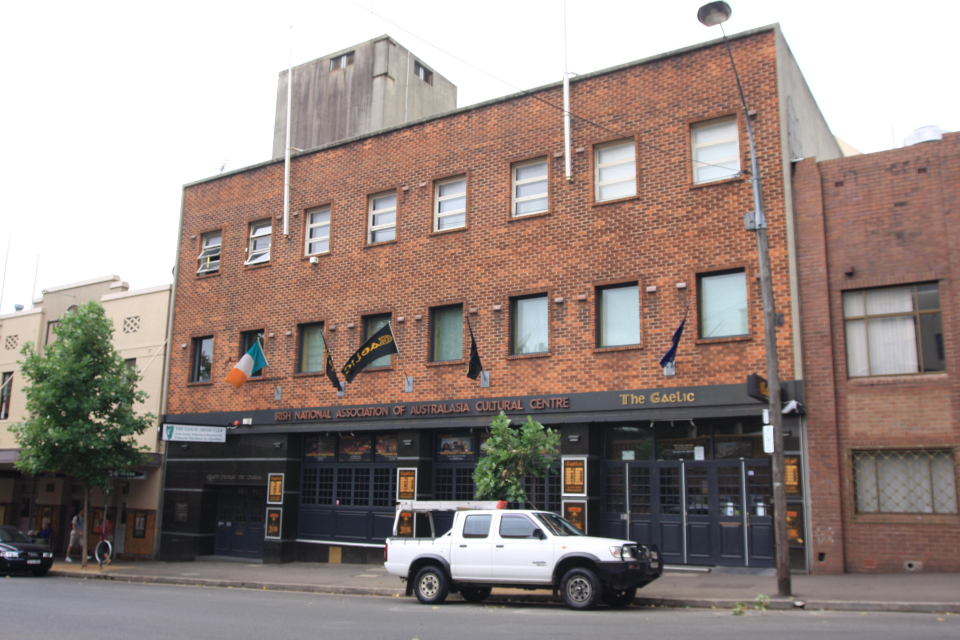The Dictionary of Sydney was archived in 2021.
Irish National Association
Citation
Persistent URL for this entry
To cite this entry in text
To cite this entry in a Wikipedia footnote citation
To cite this entry as a Wikipedia External link
Irish National Association of Australasia
On 21 July 1915 a meeting in Sydney of 18 Irish people unanimously passed a resolution to establish an Irish National Association. The proposer of the resolution was a young man of Australian birth, Albert Dryer.
Foundations
Born in 1888 in Balmain, Sydney, Albert Dryer was the son of an Irish mother and a part-German, part-Irish father. The family surname was originally spelt Dreijer. His father died when he was young, and his mother remarried. The family moved around Australia during Albert's childhood, and when he finished school he found work in Melbourne as a clerk with the Customs Department.
In 1909 he was transferred to Sydney, and entered Sydney University to study English literature. He was awarded a Bachelor of Arts degree in 1914, and it was about this time that events in the land of his ancestors awakened Albert Dryer's interest in Irish culture, history and politics.
When the Home Rule Bill was deferred at the outbreak of the First World War, Dryer decided that it was time to rally Irish-Australian opinion
a) To assist Ireland to achieve her national destiny
b) To preserve the ideal of Ireland's sovereignty.
He enshrined these words as the first aims of the Irish National Association.
The new organisation grew rapidly, organising social evenings. Irish dancing and language classes, card nights, plays and lectures. The first Irish National Concert was held in the Sydney Town Hall on 23 November 1915, and by January 1916 the INA had 211 financial members. In that month the interim committee handed over to the first elected committee, headed by Peter O'Loughlin and with Albert Dryer as Secretary.
From its inception it was intended that the INA be a national organisation with branches in various cities and an overall national executive. In the early days there were branches in Brisbane and Melbourne, but these never took off. Later in the 1940s and 1950s Dryer managed to whip up Melbourne, Brisbane and Canberra branches, but again they were short-lived. Sydney, theoretically the Padraig Pearse Branch, remains the only surviving branch of the INA.
Nationalism in wartime
The nationalist aims of the INA became even more important in 1916, as Dryer and the rest of the Irish community watched helplessly while Britain crushed the Easter Rising and proceeded to execute sixteen of its leaders.
Whilst the INA continued its social and cultural activities, the political purpose of the association came increasingly to the fore. In a wartime British colony, already bitterly divided over the conscription issue, it was inevitable that Irish nationalists would be regarded as sinister subversives.
[media]On Monday 17 June 1918, Albert Dryer and six other INA office-bearers were arrested under emergency wartime regulations, and imprisoned without trial. Apart from Dryer they were Thomas FitzGerald, secretary of the Brisbane branch, Maurice Dalton and Frank McGeown of the Melbourne branch, and Edmund McSweeney, Michael McGing and William McGuinness of the Sydney branch.
The seven were accused of membership of the Irish Republican Brotherhood, and were held in Sydney's Darlinghurst Prison for several months. Six were released on 19 December 1918, but Albert Dryer was held until 11 February 1919.
New divisions
The political situation in Ireland was changing rapidly through the late 1910s and early 1920s. While the INA carried on its cultural and social activities and offered what support it could to the struggle for Irish independence, it was inevitable that the division of opinion over the Treaty would be reflected on the Australian scene. The anti-Treaty forces, including the INA, continued their political campaign in Australia with protest meetings, leaflets and newspapers, as well as collecting money to send home to Ireland. Although the Irish community was divided, the Australian Government still feared that the seditious Irish would stir up trouble.
So on Monday 30 April 1923, when two Republican speakers arrived to address a meeting at Waverley in Sydney's Eastern suburbs, they were arrested. The 'Irish Envoys', as they became known, were Sean J O'Kelly (president of the Gaelic League, Sinn Féin TD for Louth-Meath, and later President of Sinn Féin), and Father Michael O'Flanagan (vice-president of Sinn Féin and a judge in the Dáil courts during the War of Independence). After a judicial enquiry the envoys were deported from Australia.
Despite the Envoys incident, the Irish community in Australia was increasingly weak and divided. New arrivals had come 12,000 miles to leave the problems of Ireland behind them, and were not interested in the INA's political activism.
By 1926 even the INA's weekly céilí dance, in its premises in George Street, Sydney, was forced to compete with a rival function in nearby Flinders St. Nevertheless the 1926 Easter concert raised £120 to be sent home to Éamon De Valera. It was the last regular remittance, as later that year De Valera led the Fianna Fáil split from Sinn Féin.
During the 1920s the INA moved several times, and it is clear from the executive committee minutes that support continued to decline. By the early 1930s it was almost impossible to get members along to general meetings, and many lapsed for want of a quorum.
New beginnings
In March 1934 the INA Executive committee called a general meeting of its members and other Friends of Ireland, 'to ascertain by what means this Association could still carry on'. As a result a reconstruction committee was elected. Fortunately the Irish community rallied to the support of the INA and by the 1940s the association was entering its golden age. It [media]was at this time that the second great figure came onto the Sydney Irish scene – Dan Minogue.
A native of County Clare, Dan Minogue came to Australia in the 1910s and for over 30 years it was his vision which shaped the course of the INA.
The minutes of the INA Executive meeting, held on 28th August 1944, record the historic resolution:
That the Committee of the Irish National Association be authorized to purchase the property known as 56-58-60-64 Devonshire Street, City, for the sum of £3400.
This was the first stage of Dan Minogue's great vision, to establish a cultural centre for the Irish in Sydney. There was to be a lot of work ahead, in raising the money to build the centre and in building up a cohesive Irish community to patronise it.
But whereas the founders of the INA were mainly working people with few political contacts, the INA of the 1940s was dominated by those successful in politics. Dan Minogue was an alderman on the Sydney City Council along with two other INA Executive members, Tony Doherty and Eric Drew. In 1949 Dan Minogue was elected Federal member for the seat of West Sydney which he held for 20 years.
Religion and sectarianism
[media]One of the problems faced by the INA during the first 40 years of its existence was the dominance of Irish affairs in Australia by the Catholic Church. When the INA was formed, the inclusion of non-sectarianism among its aims was condemned by Cardinal Kelly.
Nearly 30 years later the INA again came up against the Church when it tried to appropriate the proceeds of the 1944 St Patrick's Day sports to the purpose of building a hall for the Irish people in Sydney.
[media]Proceeds of St Patrick's Day had traditionally gone to the Catholic orphanages and the next year the Church took over the organisation of the sports from the INA. The association finally won back control of the St Patrick's Day sports in 1957, and continued on for over 20 years until the revival of the St Patrick's Day Parade in 1979.
Before the Devonshire Street site was developed the INA ran dances at St Benedict's church hall in Broadway. The Sunday night céilís were well attended and the ranks of the Irish were swelled by new immigrants arriving under the Labor Government's immigration program introduced in the late 1940s.
Strangely there was some opposition to these immigrants from those Australian Irish who believed they should have stayed at home to build up the new Irish Republic. Nevertheless it was the immigrants who proved to be the lifeblood of the INA through the 1950s.
1948 saw one of the most [media]historical events in Irish Australian history. In that year the former Taoiseach and 1916 veteran Éamon de Valera made a controversial visit to Australia to campaign for an end to the partition of Ireland. Albert Dryer organised the Sydney leg of de Valera's visit under the auspices of the INA.
Building and expansion
In the early 1950s the membership fee stood at 5 shillings and the INA was thriving. In 1951 the first annual feis was held at the Sydney Sports Ground, and over the years this was built into a national contest in Gaelic and other sports, Irish dancing and piping.
In 1953 the existing terrace houses in Devonshire Street were demolished, and as well as the céilís and other cultural events the first issue of the newspaper Sydney Gael was published. Other activities of the INA included an annual lecture at Sydney University, housie (bingo), Irish dancing, the pipe band, and the upkeep of the 1798 Memorial at Waverley Cemetery.
Finally in 1956 the INA Cultural Centre was completed with the help of a £37,000 loan. There was a grand opening on 16 September by Dan Minogue in the presence of Albert Dryer, the Irish chargé d'affaires and the lord mayor of Sydney, and a crowd of 2000.
The opening of the centre led to another upsurge in activity in the INA. In 1957 the association finally won control of the St Patrick's Day sports, adding to its existing activities. In those days the kiosk on the INA's mezzanine floor serviced the dances on the ground floor and the various meetings, card nights and band practices on the first floor.
[media]By 1958 the INA activities had expanded to include an Irish trade promotion group, a recreation group, ladies' auxiliary, drama group, handball, library and céilí dances. The Victorian branch of the INA, re-established two years earlier, was still in operation. There were also ongoing events to be organized, such as the St Patrick's Day sports and the national Gaelic Festival.
As the INA moved into the 1960s the momentum continued. Television was installed in the Leinster Room on the first floor; Irish goods were sold and the trade committee was flourishing, as were Irish dancing, drama, céilí, handball and golf groups. The major festivals were the interstate feis, the St Patrick's Day sports and the Easter concert.
1963 saw the end of an era with the death of the INA's founder, Dr Albert Dryer. And it seemed the end of the golden age was nigh, as the decade saw a slow but steady decline. This was partly due to the reduction in the number of Irish immigrants arriving in Australia, and also partly due to the inevitable personality clashes which had developed within the enclosed Irish community.
Assimilation and survival
Whatever the reason the 1960s saw a continuing decline in the INA's activities. One by one the national feis, handball, card nights and other activities were discontinued. They were replaced by harbour cruises and group tours to Ireland, but the writing was on the wall.
Dan Minogue, detecting the assimilation of the Irish community and the need to compete with mainstream entertainment venues for their patronage, pressed ahead. In 1969 a lift was installed in the INA Cultural Centre.
The [media]passing of Albert Dryer had also seen a revival of moves for a concept which he had always bitterly opposed, a licensed club for the Irish community. It was to be Dan Minogue's last mission in the Irish community, and it was he who had the honour of opening the Gaelic Club Ltd on the first floor of the INA building in 1973.
Minogue's memoirs, entitled A Rambler from Clare, had been published the previous year to mark the end of his Parliamentary career.
The INA continued on, surviving the changes as it had for 60 years. Nevertheless action grew from conflict, and in the late 1970s a Reform Committee emerged from the young, more recent Irish immigrants. The old guard was ousted and new blood brought new ideas.
In 1979 the St Patrick's Day Parade was revived, and another new era began. Soon the Parade festivities expanded to Irish Week with parliamentary and media patronage, and the INA reached out to other Irish organisations and to the Irish-Australian community for support and organisational assistance.
As it nears its centenary in 2015, the INA still continues to work for the Irish community, holding Irish music concerts and regular dances, sponsoring dancing classes, and Irish language classes. The Association also maintains the Albert Dryer Memorial Library, containing many rare antiquarian volumes collected and donated over the decades, including a copy of the Book of Kells donated by Éamon de Valera. Although the St Patrick's Day Parade, the Australian Irish Welfare Bureau and Irish Language School, Sydney are now independent organisations, they still maintain strong links to the INA.
References
Anne-Maree Whitaker, 'Irish National Association of Australasia 70th Anniversary Historical Reference', pamphlet, INA, Sydney, 1985


